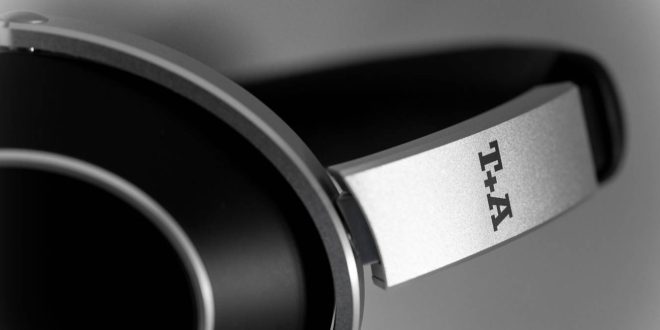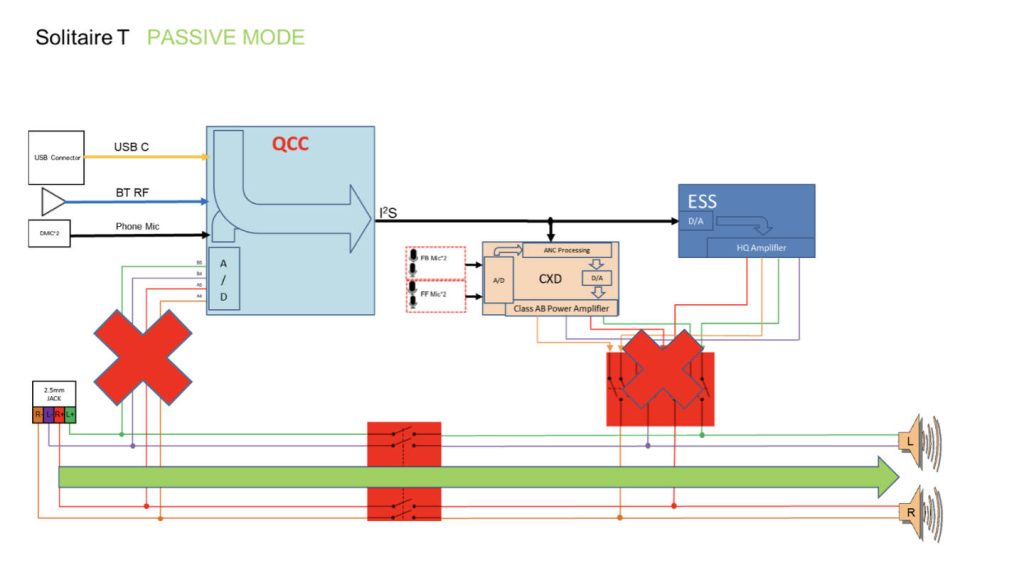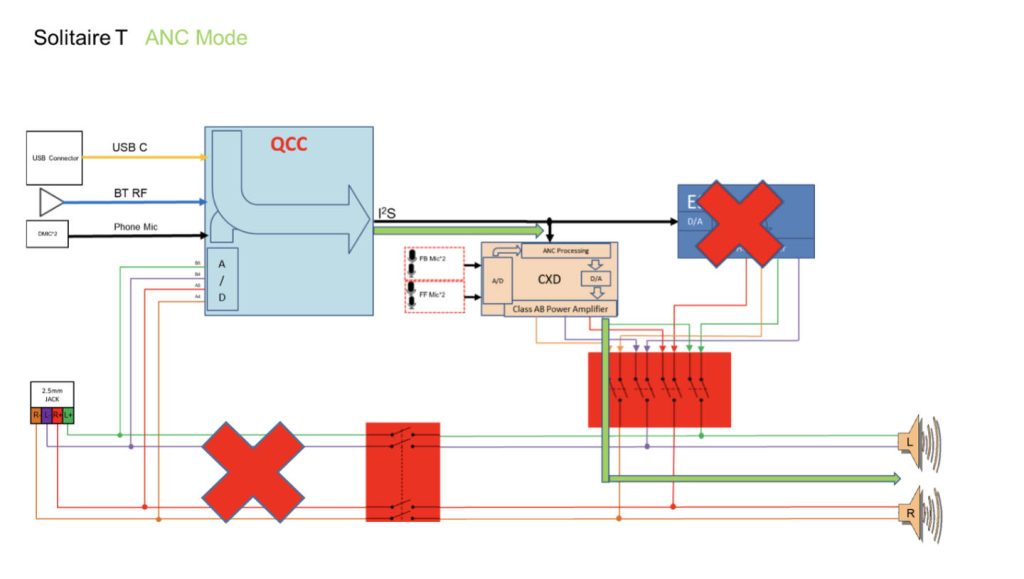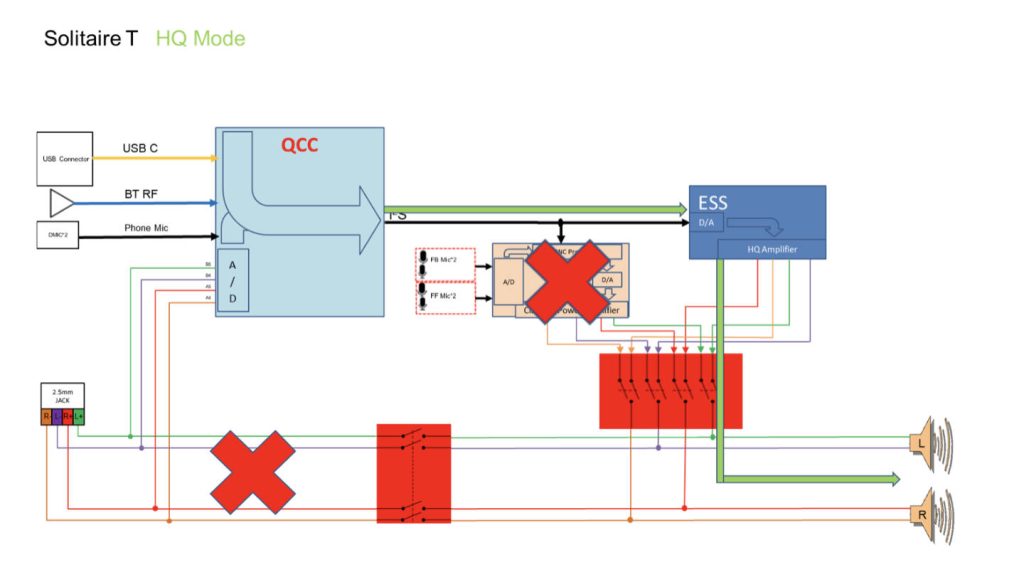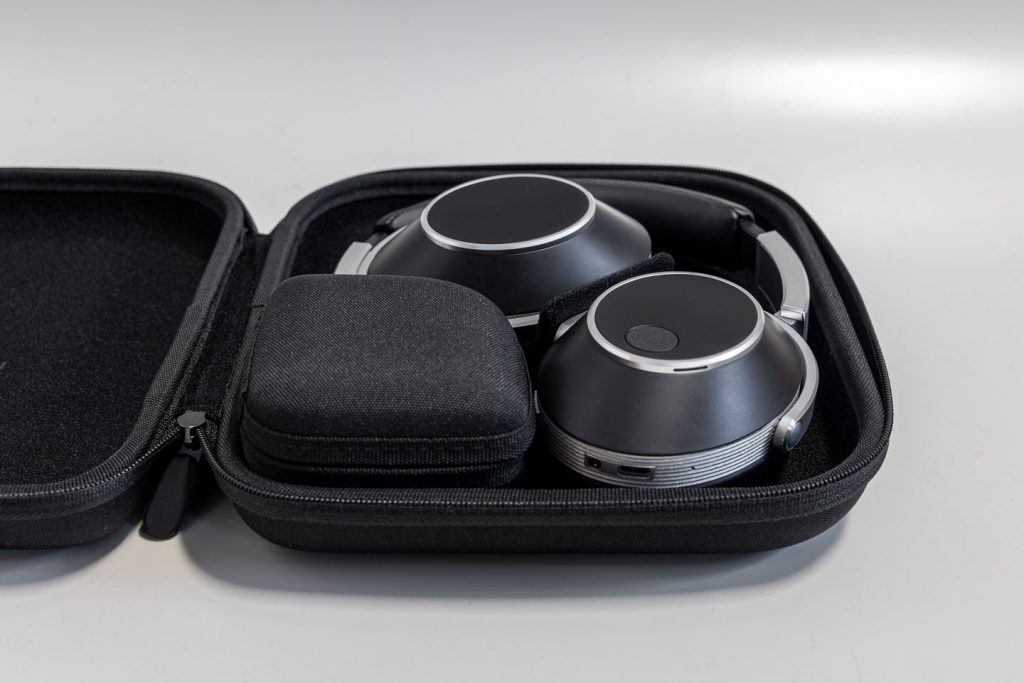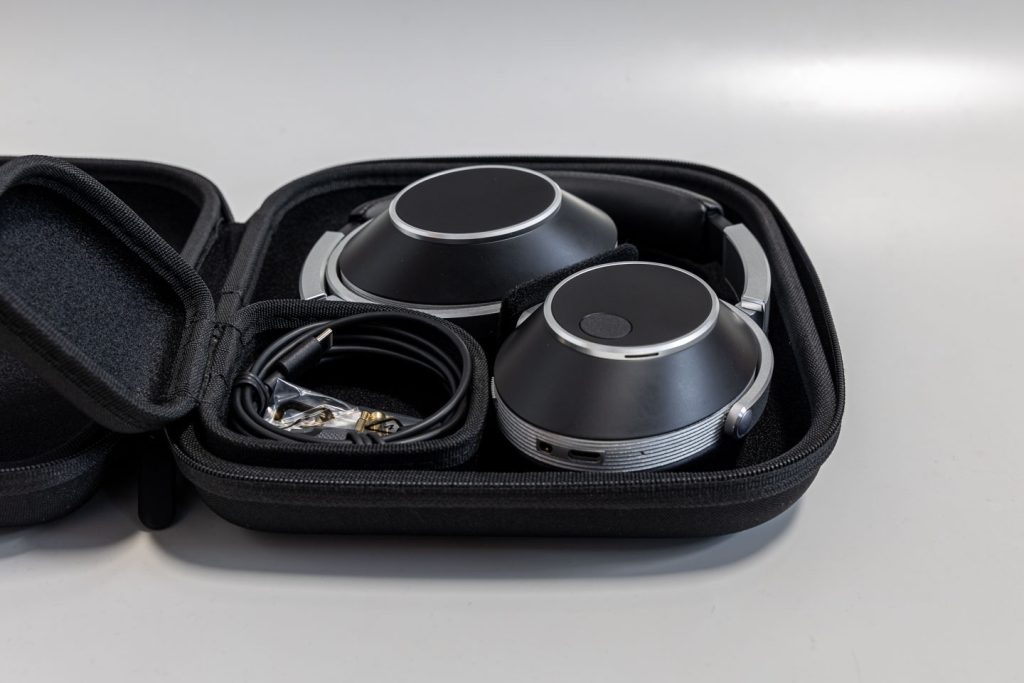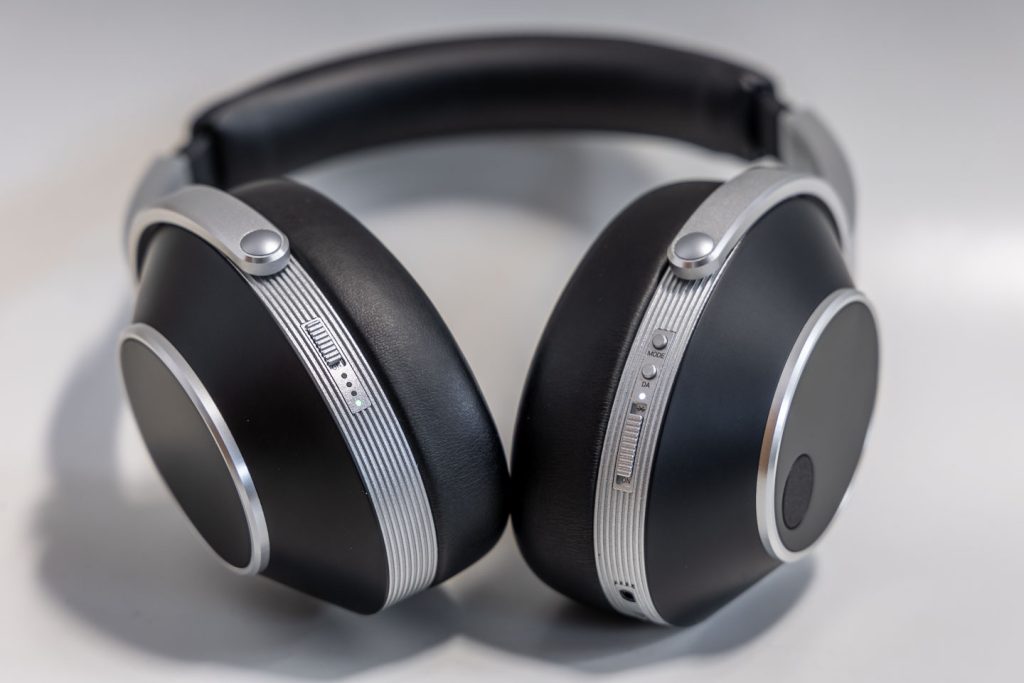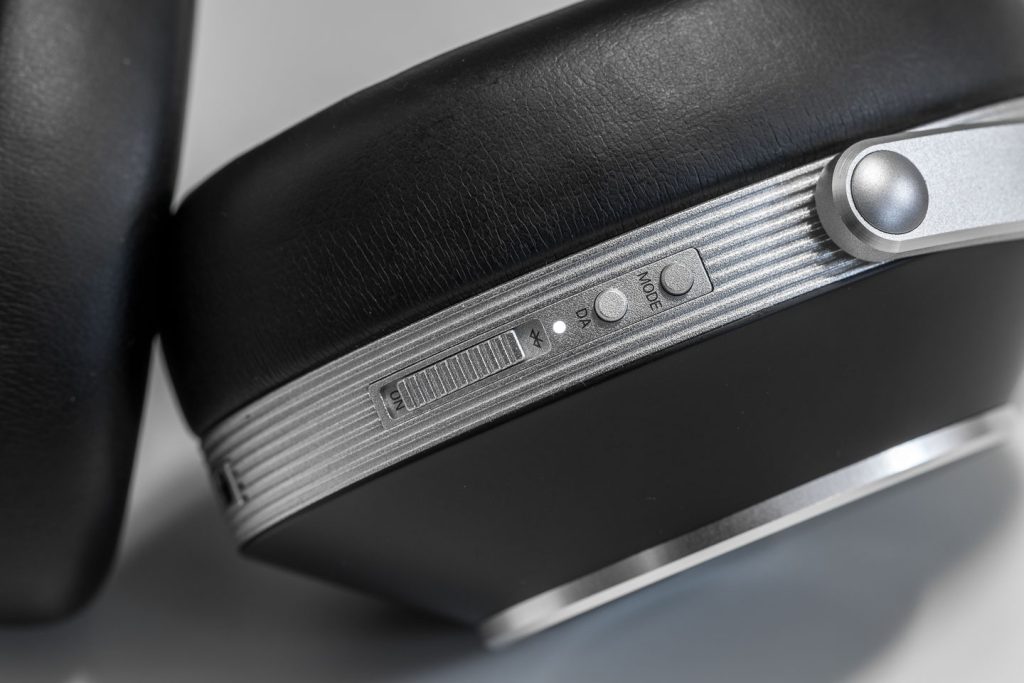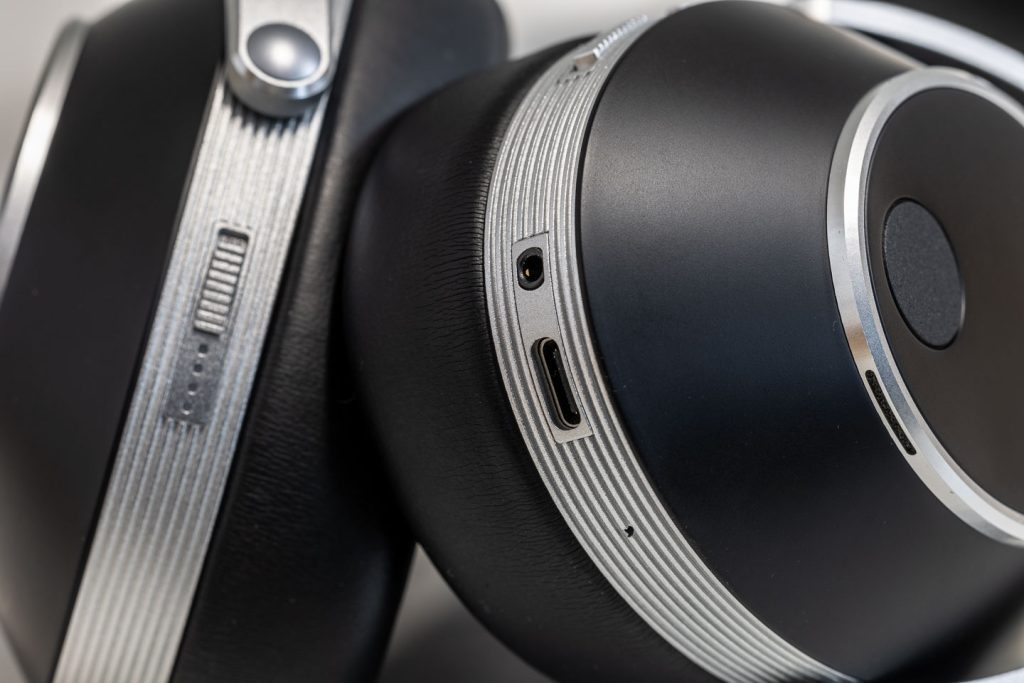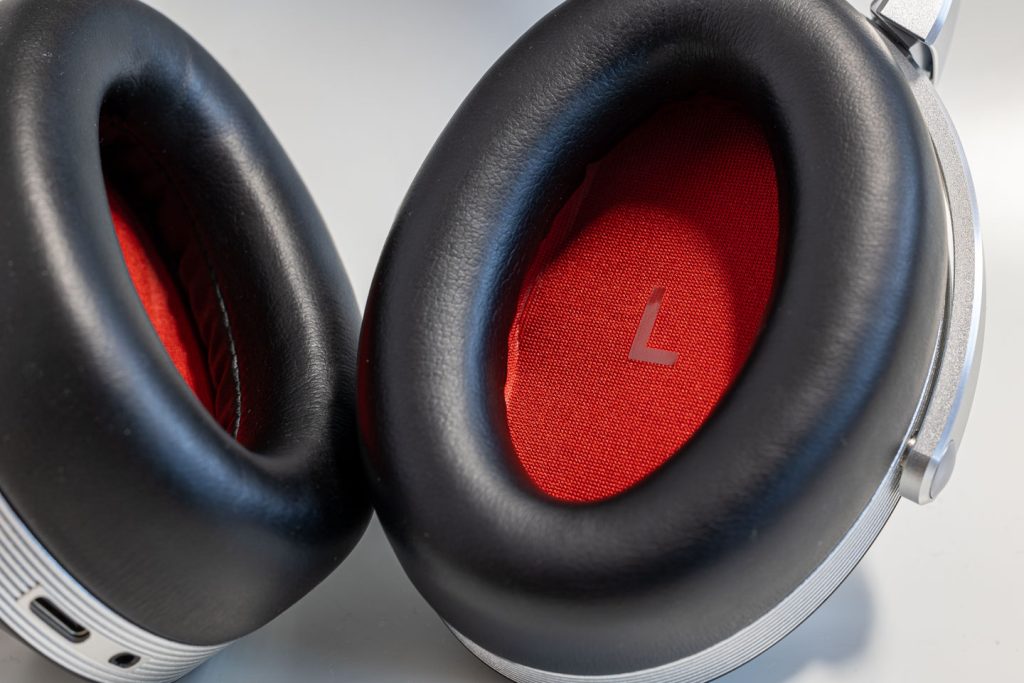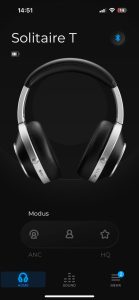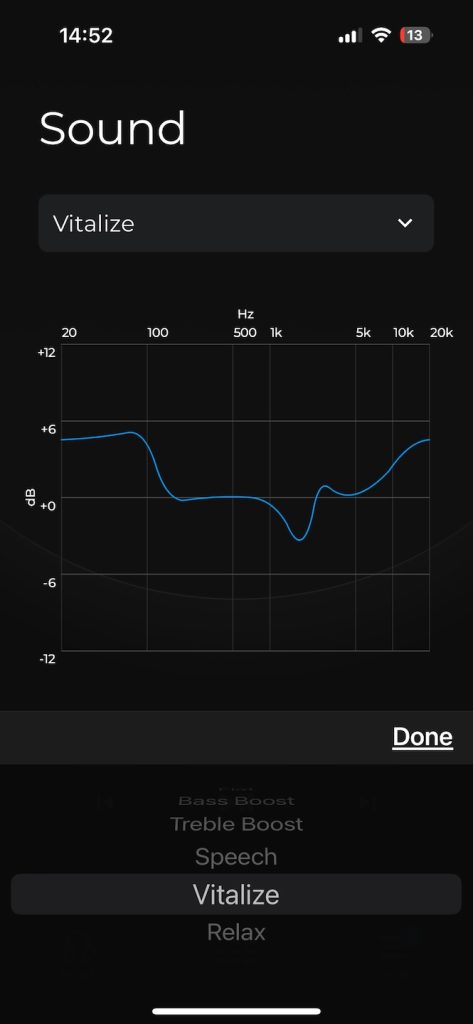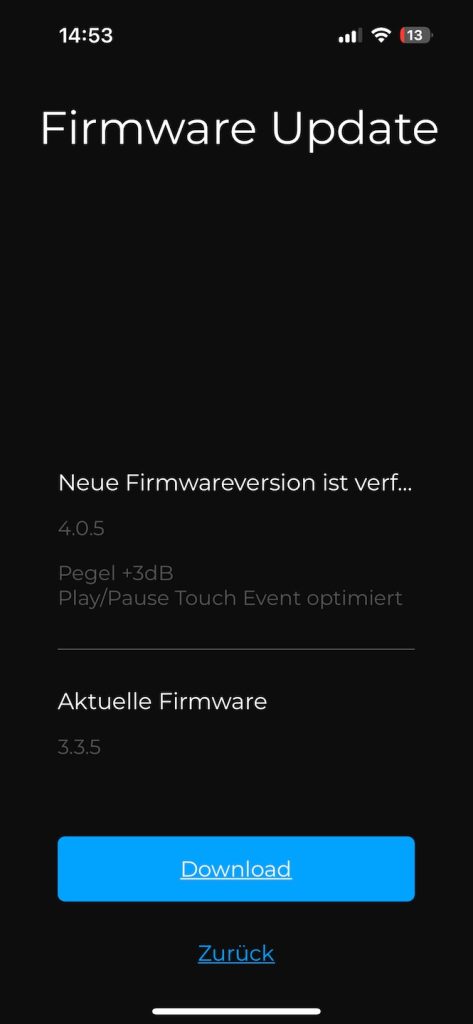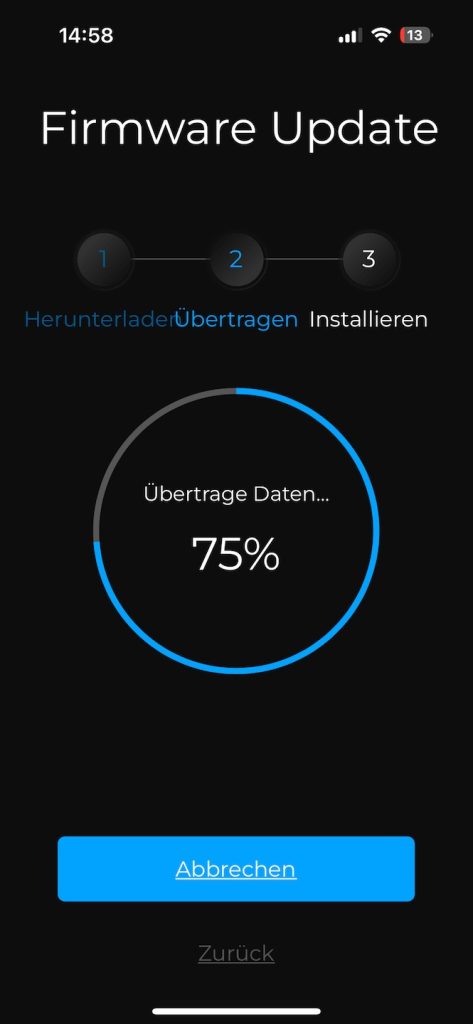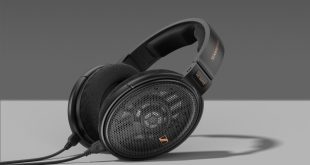Excuse me? Bluetooth headphones from the Herford-based high-end manufacturer T+A? And then for a whopping 1,300 euros? Oh please! That can only backfire. Man, what a mistake I made. I tested the T+A Solitaire T for a few weeks and can only congratulate the Herford company. You have just created the best all-round headphones for high sound demands. Here is the detailed test report.
For me, Christmas 2022 was not only from December 24 to 26, but almost the entire month. This is due to the fortunate circumstance that several excellent headphone amplifiers and absolute dream headphones arrived for testing at the same time. All of them are state of the art in their respective classes. Including a great example made in Germany. We are talking about the T+A Solitaire T. The fact that these are essentially Bluetooth headphones should not deter analog purists and high-end enthusiasts.

Of course, I’d heard of the Solitaire T before, but my attention span for Bluetooth headphones is eroding pretty quickly now, because they all do more or less the same thing. There are of course differences in detail and sound, but there are very few truly fascinating exceptions. The T+A Solitaire T is such an exception. Better. Great. German engineering at it’s best. However, it’s hard to tell from the feature list, which only has the usual checkmarks for active noise canceling (ANC), transparency mode, hands-free calling with the smartphone and aptX. So why my early enthusiasm for these headphones?
T+A Solitaire T: if Bluetooth headphones, then the right ones
The Herford hi-fi engineers are not normally reticent when it comes to explaining their products in technical detail on the website. This also applies to the Solitaire T, but there is much more to learn about these headphones, as I found out in conversation with T+A founder and physicist Siegfried Amft.
But where is the best place to start? I have to digress quite a bit, because it all starts with the question of how and for whom Bluetooth headphones are normally developed. The overwhelming majority of potential customers are “normal users” and are most likely to be interested in in-ears for as little money as possible. Those who can afford it buy (mostly) Apple AirPods. This makes Apple the absolute world market leader. Just to throw a figure into the room: The iPhone inventor sold 4.2 million units of the AirPods 2 shortly after their availability in just three weeks, as reported by MacTechNews. An astronomical figure that even the biggest hi-fi manufacturers can only dream of.
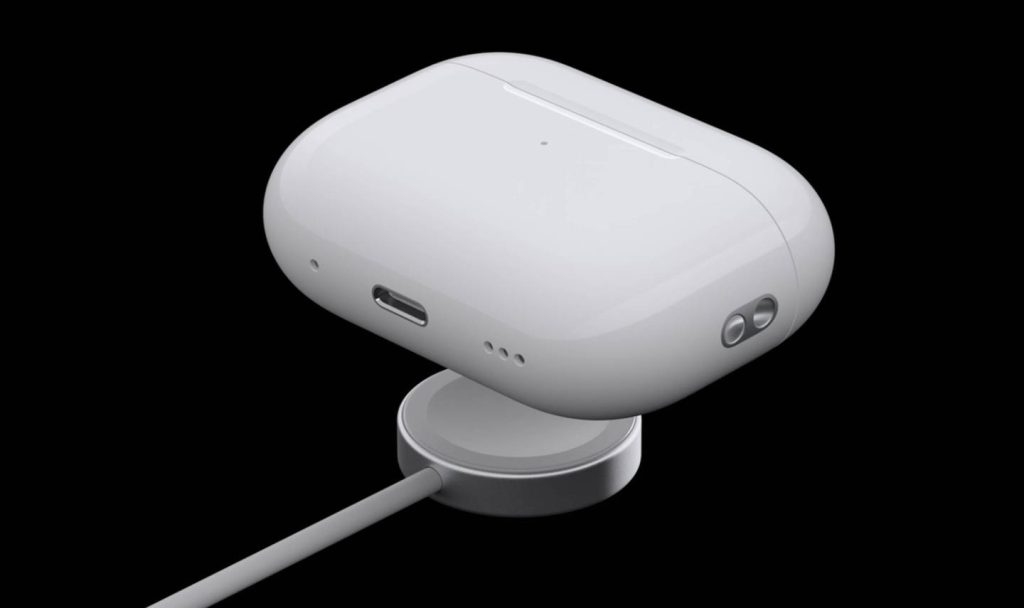
In contrast, Bluetooth headphones are almost a niche product in their own right. And Apple is also heavily involved here with the AirPods Max and the Beats brand. However, this market niche is still large and lucrative enough for almost every manufacturer of note to participate with their own products. These are usually priced between around 200 and 800 euros. There are only a few exceptions, such as the Mark Levinson No. 5909 for around 1,000 euros(test report). With the Solitaire T, T+A is now entering a price class above this at 1,300 euros.
Bluetooth is still considered “not high-end capable” due to its limited bandwidth and lossy data transmission. If sound quality is your top priority, wired headphones with a suitable DAC and headphone amplifier are the better choice. However, if the conditions are right, Bluetooth is not so bad that you should completely disdain it and forgo the convenience it offers, especially for mobile use. Not only because of the wireless transmission, but also thanks to the additional features of active headphones, such as noise suppression, telephony or voice assistance. T+A has put a lot of thought into how best to combine the advantages of top-class wired headphones with mobile Bluetooth convenience.
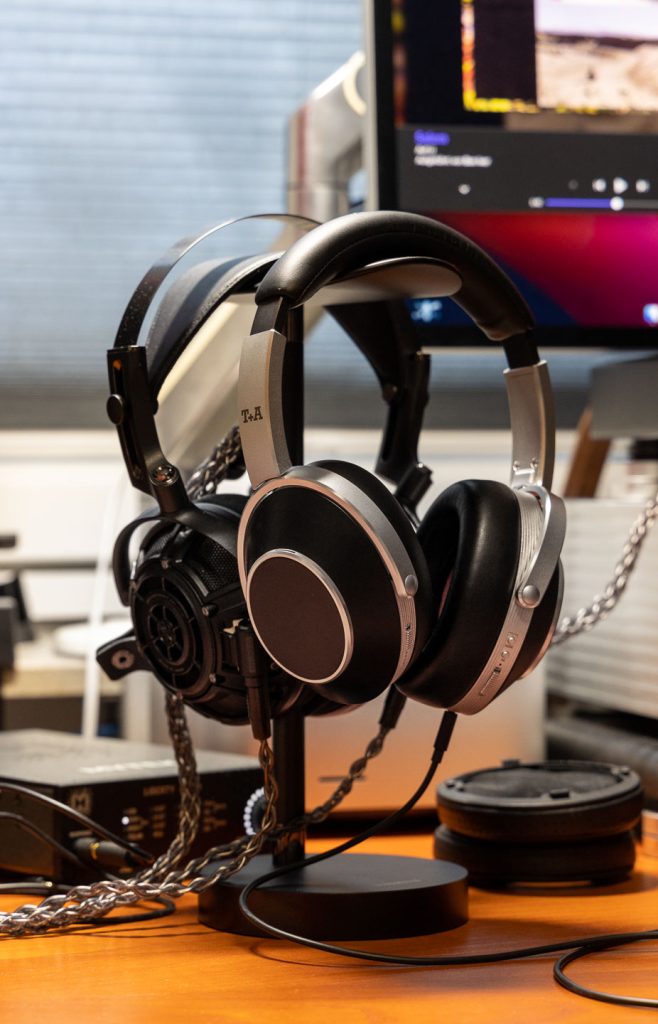
Point 1: The vast majority of BT headphones on the market are not acoustically tuned manually for cost reasons, but simply “bent” to the developer’s taste using DSP correction. Without DSP, these speakers would hardly deserve to be called hi-fi. There are a few exceptions that offer a passive mode and sound quite decent. However, this is usually much different than in active mode.
T+A has acoustically tuned the Solitaire T from the ground up as a passive headphone (as compact as possible) according to all the rules of the art and with great effort. As classic circumaural, dynamic, closed headphones. A completely newly developed cellulose cone with a diameter of 42 mm and a special damping edge to suppress coil resonance is used for this purpose. The cone is designed to handle 120 dB of sound pressure with minimal distortion. The enclosure was also designed as a pressure chamber system with precisely defined sound guides and acoustic filters to linearize the frequency response and enable a powerful bass.
The result is an excellent passive headphone that can play in the top class even without any digital sound bending. Only on this basis did the developers go on to activate the headphones and add Bluetooth and a USB-C mode. The fact that this requires electronics in the housing (which affects the acoustics) was of course already considered beforehand. But first of all, the headphones should simply sound excellent without any electronic aids. In this way, the sound no longer needs to be enhanced via DSP in active mode.
Point 2: T+A took a more uncompromising approach to activation than any other manufacturer I know. Normally, a decision is made in favor of a BT chip depending on the costs, whereby the manufacturer Qualcomm has by far the largest market share and the largest selection. The Solitaire T also contains such a chip, namely the Qualcomm QCC 5127 with Bluetooth 5.1 Class 2 and support for aptX (HD) and AAC. This chip basically has everything on the silicon that is needed for a BT headset. Including a simple ANC function, DAC and output stage. Topic settled, you might think. Just connect the drivers and the BT headphones are ready. That’s how it usually works.
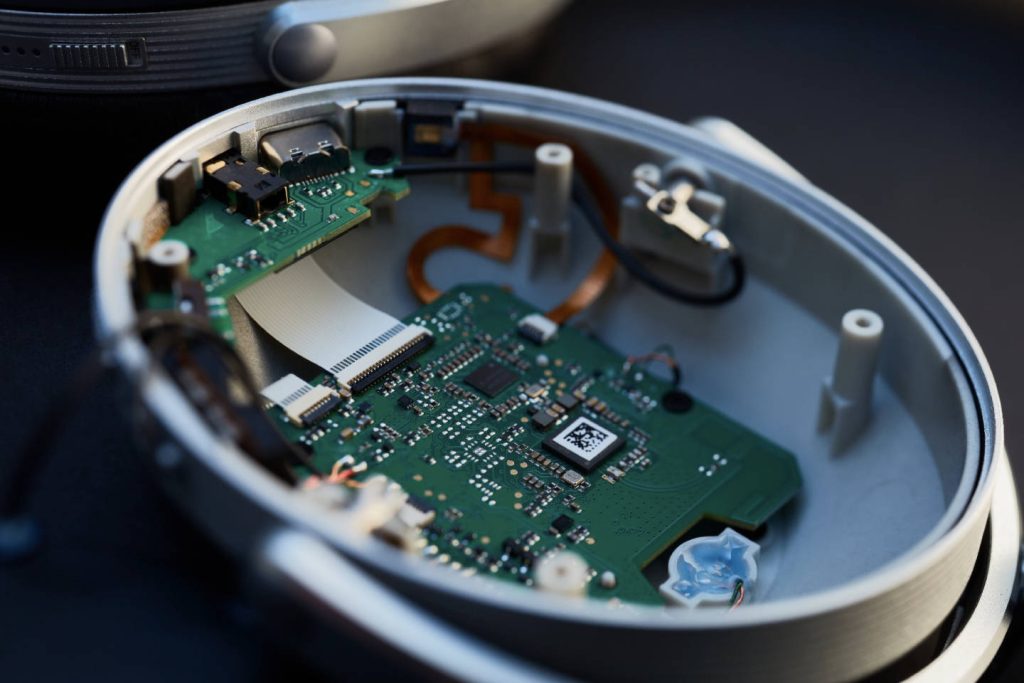
The problem: The QCC 5127 offers the best Bluetooth features, but has neither the most effective ANC nor the finest DAC, nor can its output stage be considered truly suitable for such high-class headphones. When it comes to the best ANC, Sony is currently at the top of the list. And when it comes to the DAC, the ESS Technology with its Sabre DACs took the top spots. So what did T+A do? They simply transplanted an additional Sony chip for ANC and an ESS DAC into the Solitaire T and designed a circuit that switches to the chip with the best characteristics depending on which mode is activated. In the following pictures you can see the simplified circuit diagram and the signal paths in the respective modes:
The playback modes
Owners of the Solitaire T have several options for enjoying music with their headphones. In passive mode, the internal electronics are completely switched off and the playback is completely analog via a cable from an external DAC/headphone amplifier. The scope of delivery includes a cable with a 3.5 mm jack plug (plus an adapter to 6.35 mm and an airplane adapter), as well as a balanced cable with a Pentaconn plug. Connection to smartphones or other iDevices with an analog headphone output is possible, but not advisable. Both from a qualitative point of view and because of the usually integrated level limitation of such devices.
Active mode with ANC switched on: The Qualcomm chip receives the digital input signals either via Bluetooth (when the Bluetooth switch is set to ON) or via a USB-C cable, which is also supplied and serves as a charging cable. Analog music signals are processed in active mode via the balanced line-in input (2.5 mm jack socket) and then converted to high-resolution AD. In addition, the Qualcomm chip controls the phone mode with the main microphone and one of the ANC microphones to form an array to produce optimum voice quality. In this case, noise suppression for music is handled by the Sony chip, which also takes care of D/A conversion and amplification using Class AB technology. The HQ chip (the Sabre) is switched off in ANC mode to save energy.
In HQ mode, the Sony chip is switched off completely. The digital signals are passed directly from Qualcomm to the Sabre chip without volume control. This has a particularly high-quality and low-noise converter. After conversion, the signals are transferred with analog volume control to its Class A power amplifiers, which are connected directly to the transducers. Because Class A amplification consumes more power, the battery life in this mode drops from an outstanding 70 hours to a still excellent 35 hours. Speaking of which, the Solitaire T has a comparatively large battery with 1,200 mAh. Should it ever reach the end of its life, T+A offers a low-cost replacement at the factory.
The T+A Solitaire T in detail
All theory is gray. Of course, a high level of technical sophistication alone does not guarantee good sound and convincing practicality. When unpacking the Solitaire T, however, the anticipation of the listening test increases enormously. The headphones are so fine and perfectly finished that even some ultra-high-end headphones that are several times as expensive look like they have been lovelessly cobbled together.
Let’s start with the transport case. Although this is a conventional hard shell with a textile covering, as we know it from countless other mobile headphones, the T+A case offers nice little details that fit into the convincing overall picture. For example, the smooth-running and protected zipper of the case, but even more so the compartment inside with magnetic lid for the cables and adapters needed on the go. I was particularly pleased that the case wasn’t necessarily cut to fit the waist, but left a little room. This means that the headphones can also be placed in the case with the headband adjusted to my size without having to push the headband completely together each time.
What’s more, with just a little practice it is possible to remove the headphones from your head, fold them up and place them in the case in a single fluid movement. How often have I been annoyed with other listeners that it is a real fiddle and puzzle to stow the handset in the case. Not so with the T+A. – Little things that make handling the Solitaire P so much easier when you’re out and about and help to maintain friendships.
About the headphones: Everything that looks like aluminum here is actually light metal, and not cheap plastic trimmed to look like aluminum. The design of the Solitaire T is strongly based on that of its larger brothers P and P-SE, which means that T+A now has a genuine and easily recognizable brand look for its headphones on the move. Thanks to the elegant aluminum parts with the solid fork suspension and the noiseless and smoothly rotating hard metal joints, as well as the plain black or white housings and ear pads, the look is not only unique, but also extremely elegant. I’m sure that the Solitaire T is much more likely to attract admiring glances on an airplane or train than even a B&W Px8. Despite all this, the T is very compact and, at 326 g (exactly as stated by the manufacturer), literally very portable.
The ear and temple pads are covered with imitation leather. Not out of false avarice, but for purely practical reasons. The material is almost indistinguishable from real leather, very soft and pleasant on the skin and hypoallergenic. Last but not least, vegans will appreciate the absence of animal ingredients.
The pads completely enclose the ears but, as expected, do not offer quite as much free space for the ears as full-size over-ear models due to the compact design of the headphones. Nevertheless, the wearing comfort is uniquely good. At least on my head, the Solitaire T literally clicks into place without being uncomfortable or unstable. Hours of listening pleasure are no problem.
Even the passive noise insulation of the Solitaire T is amazingly good. But what’s much more fascinating is that I feel far less like someone else is covering my ears under the shells of the T+A than with other closed earphones. Of course, the acoustic ambience is also duller and “queasy” under the T+A, but that bothers me far less here. I pondered the cause for a long time. Until I realized that the Solitaire T, thanks to its top-notch construction, makes practically no noise and conducts it to the skull. Sound is only transmitted to the ears when the housings are touched. But overall, the “T” is the mechanically quietest closed headphones I know of. – Simply great! With one small drawback: in cable mode, slight noises can be heard when touching the cable or when the cable rubs against clothing.
The practice – how it works!
Most modern Bluetooth headphones hardly differ in terms of functionality. The Solitaire T also has to make do with what the available Bluetooth chips offer in this respect. I’ve already described how T+A cleverly utilizes the capabilities of different processors, but in terms of features, everything here is familiar. In the end, the only question is how successful the operating concept is.
In short: Excellent! There is a handy slide switch for on/off on the left housing. Several small LEDs underneath provide information about the charge status and operation when the device is switched on. On the right-hand housing there are two small, easy-to-feel buttons, another slide switch and another LED. The latter uses a color code to indicate the currently active connection protocol (SBC, AAC, aptX or aptX HD). Not many headphones offer this information, and if they do, then at most via a companion app.
The “DA” button activates the voice assistant. Siri, Google and Alexa are currently supported. The “Mode” button is used to switch between the three modes ANC, ANC off and HQ. A male voice, specially recorded for T+A, provides information about the respective mode. In the companion app for the Solitaire T (iOS and Android), which was released just before Christmas, you can now also set a few gradations for the ANC mode, among other things. The app also offers various predefined EQ curves. – The “Flat” setting is completely sufficient for my taste thanks to the great tuning of the “T”.
The Bluetooth switch initially left me with a small question mark. To activate the pairing mode, the – as with many other BT headphones – must be pushed upwards for two seconds. When you release it again, it springs back. So far everything is normal. But when pushed down to the fixed switching position, Bluetooth is deactivated. The only question is, why? The operating instructions are silent on this. When asked, Siegfried Amft gave me two reasons. Firstly, if you want, you can switch off BT in DAC mode with the USB cable connected, which means potentially less interference with the sound. However, if BT is left switched on, the BT connection to the smartphone can be maintained despite USB playback in order to take phone calls. Secondly, if BT is switched off, the Solitaire T can be put on for pure noise suppression – if the children are too loud again. Both are certainly rare cases, but it is still interesting to see what possibilities arise.
The Solitaire T also offers music control. A touch control panel is integrated into the right-hand housing for this purpose. Various tap and swipe gestures can be used to control the volume, play/pause and skip tracks and activate transparency mode. Such touch fields are not really my thing, because they often don’t react the first time or at least require some practice. This is also the case with T+A, but here I quickly got the hang of it. After the last firmware update, it worked even better.
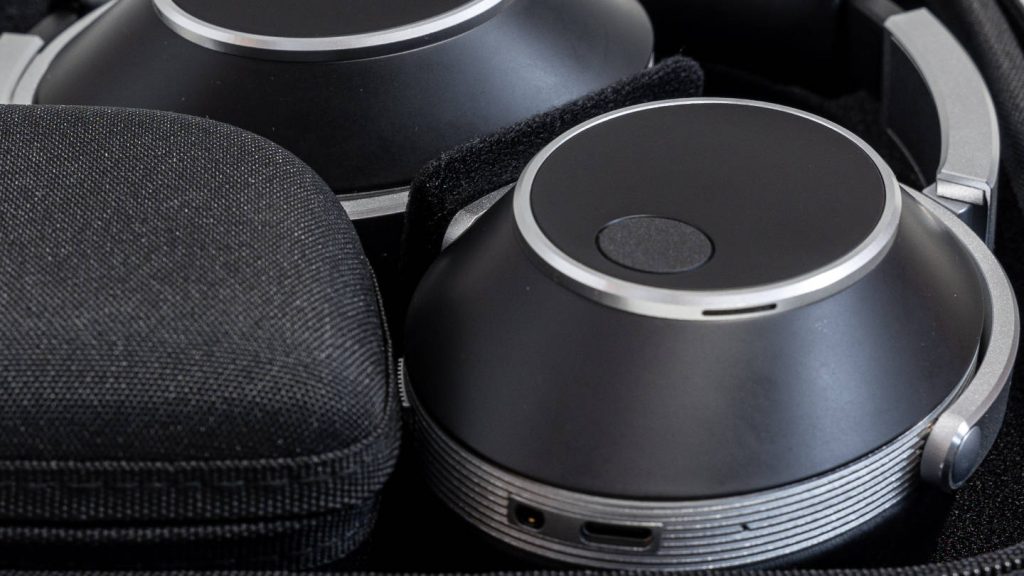
Hearing test – sound fun guaranteed with and without wire
I began my sound evaluation – after an appropriate play-in time – as the Solitaire T was developed at its core: analog. With the included balanced cable at the Pentaconn output of the Questyle CMA Fifteen DAC/headphone amplifier(test report), it was clear that T+A had a winner on its hands.
I sent no lesser opponents into the ring than the €1,500 analog-only Focal Clear MG headphones and the likewise wired Fostex TH-909 (€2,000). Both are dynamic transducers with an open construction and therefore tend to have an advantage when it comes to airiness and width of the image. However, the closed-back Solitaire T not only holds its own against both, but also impresses with an extremely balanced and at the same time wonderfully liberated reproduction for a closed-back listener. Housing influences are virtually undetectable.
At the same time, it is completely free of coloration and has no tendentious characteristics, earning it even more points. In contrast, the Fostex is somewhat brighter, the Focal warmer. However, the exemplary neutrality of the T+A does not go hand in hand with sobriety. His playing is powerful, hearty and colorful. In the bass, it benefits from its closed and extremely low-resonance construction, which gives it plenty of punch without being overpowering. In contrast to less good closed designs (and most in-ears), the sound of the “T” is never intrusive or too direct.
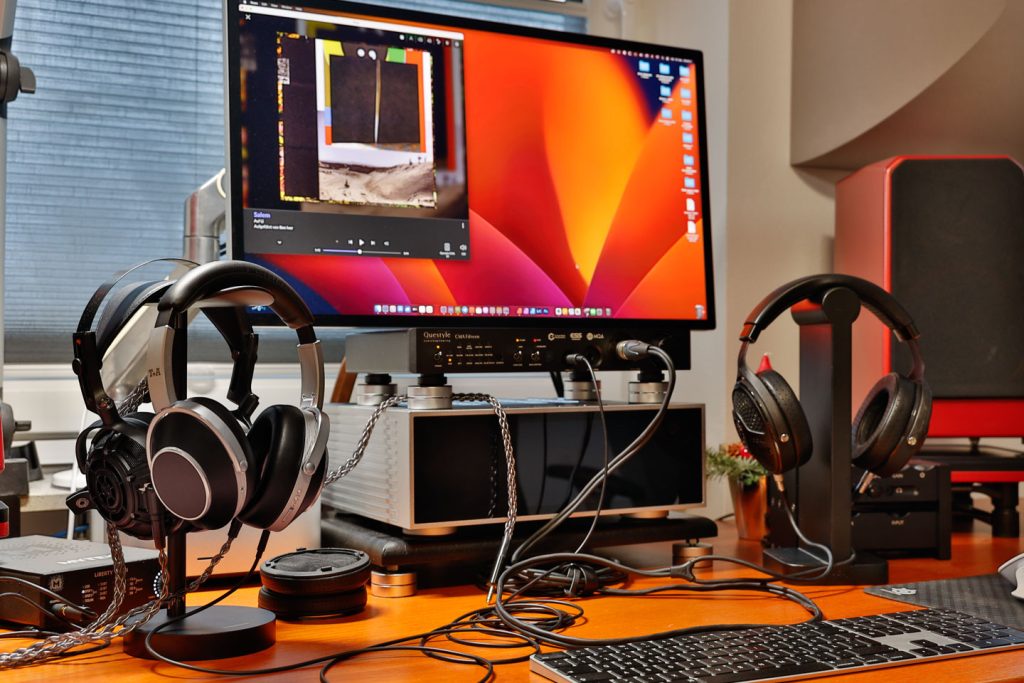
The big surprise here is that I usually prefer closed (and at the same time significantly cheaper) headphones to the two really good open competitors. Something that has never happened to me before. The question remains as to how much of these qualities the Solitaire T can retain in active mode and with Bluetooth.
Paired with the iPhone and playing music via Qobuz, the first pleasing realization is that the sound character of the “T” hardly changes at all in active mode. That’s exactly what the tuning was all about, that the headphones always cut an equally good figure both actively and passively. I have never experienced this as successfully as here with any other BT handset.
Also nice: the background noise is minimal. In ANC off and HQ mode, it is almost inaudible. With active ANC, a slight noise floor cannot be completely avoided, but here too the T+A behaves in an exemplary manner.
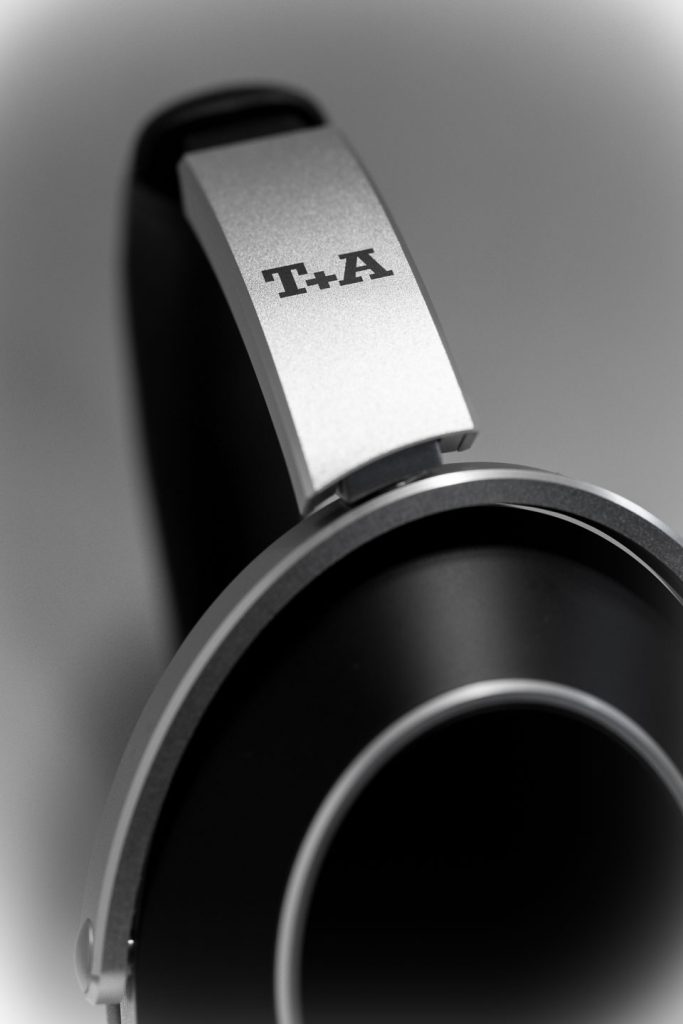
If active noise suppression is activated while music is playing, the level of loud ambient noise is significantly reduced again without affecting the sound character. Which is by no means a matter of course. At the maximum ANC setting and when no music is playing, I feel a kind of slight pressure on my ears. Like in a rising airplane, only not quite as strong and not continuously increasing. But this shows that the ANC circuit does not have a completely neutral effect on the hearing in this position, which I have also noticed with other ANC circuits. But you don’t notice this when the music is playing. If required, the ANC effect can be attenuated in two stages via the companion app. Personally, the purely passive noise insulation of the “T” is usually enough for me. But on a longer flight, I would definitely switch on the ANC.
I’ve known for a long time that Bluetooth transmission and audiophile standards are not necessarily mutually exclusive. Despite the loss of data, the sound is by no means unbearable with a good BT headset. Especially not on the road. And the T+A Solitaire T proves that Bluetooth in its current form – and at least with an AAC connection – can provide great music enjoyment. After extensive trials with the different modes of the “T”, it is clear to me that the HQ mode lives up to its name, even if it only works with the same lossy Bluetooth data stream. But the Sabre DAC and the Class A output stages provide a little more dynamic playfulness and better sensitivity in the mids and highs compared to the route via the Sony chip. And for more relaxed listening in the long term. What is always pleasing is that everything is achieved without massive sound bending and “computational audio”. In my experience, this usually makes the music strangely artificial and just sounds like a party box. If you know a little about photography: Like an HDR photo with exaggerated shadows, overly reduced highlights and ghosting effects.
Back on the Mac, I reconnect the cable to the Questyle and let the Solitaire T play passively when switched off. Yes, you can do a lot more here. The music gains pressure and tension in all frequency ranges, but at the same time seems more effortless and natural. Clearly: I prefer cable mode locally. Fortunately, Bluetooth playback via the T+A is also a real pleasure. – I am thrilled!
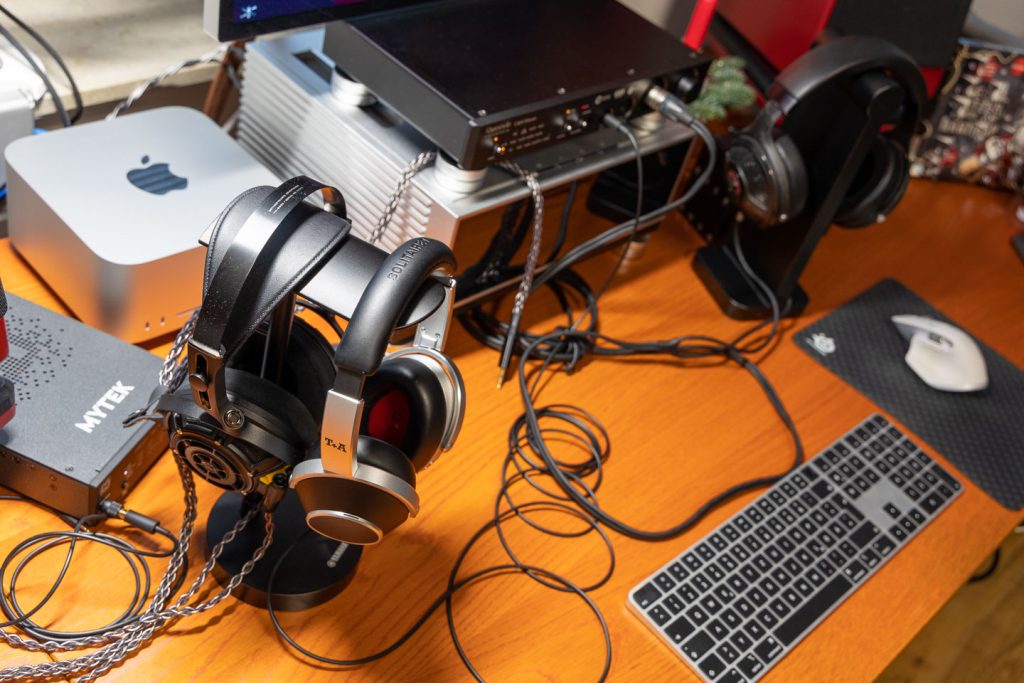
Conclusion: the all-round happy headphones
The T+A Solitaire T combines the best of two worlds. It is not only an outstanding high-end passive headphone, but also a high-flyer among mobile Bluetooth headphones and absolutely uncompromising in both application scenarios. What more could you want?
In view of its all-round successful performance, the “T” is currently by far the most attractive all-round headphones for music lovers with high sound demands. If you want a better wired and closed headset, you’ll have to search a long time – and probably dig a lot deeper into your pocket. And even if it is one of the most expensive BT headphones ever, it ultimately outperforms its mobile competitors effortlessly, offering a fantastic look and build quality and therefore an outstanding price/performance ratio. What does that mean at the end of the day? Reference status!
Rating
Sound QualityUsabilityBuild QualitySummary |
| The rating always refers to the respective price category. |
| | one of the best-sounding BT over-ears ever |
| | Extremely elegant and top workmanship |
| | Great features, very long battery life |
| | Slight cable noise |
Distribution:
T+A Elektroakustik GmbH & Co. KG
Planckstr. 9-11
D-32052 Herford
T +49 (0) 5221-7676-0
F +49 (0) 5221-7676-76
www.ta-hifi.de
Price (manufacturer’s recommendation):
T+A Solitaire T: 1,300 euros
Technical data
| T+A Solitaire T | |
|---|---|
| Concept: | Closed, dynamic, circumaural headphones with Bluetooth and ANC |
| Fitting: | 42 mm cellulose membrane |
| Nominal impedance: | not specified |
| Transmission range: | 4 – 22,000 Hz |
| Battery runtime: | 70 h, 35 in HQ mode, 2 hours charging time |
| Special features: | 3 processors for different modes, 1,200 mAh battery, Bluetooth 5.1, 3-stage ANC, Transparency mode, partially transparent. Touch operation |
| Accessories: | Hard case, USB-C charging cable, 3.5 mm jack cable with adapter to 6.35 mm, airplane adapter, Pentaconn cable |
| Weight: | 326 gram |
| All technical data | |
Teammates and opponents:
Test Fostex TH909 open high-end headphones
Test Questyle CMA Fifteen DAC and headphone amplifier – flagship with current-mode technology
More from T+A:
Test T+A Caruso: All-in-one streaming speaker in cube design
Test T+A DAC 200 and A 200 power amplifier – maximum music enjoyment in midi format, Made in Germany
Test floorstanding speaker T+A Pulsar ST 21: discreet sovereignty
Test headphones T+A Solitaire P-SE: Outstanding made more affordable
Combi test headphones with amp: T+A Solitaire P and HA 200



